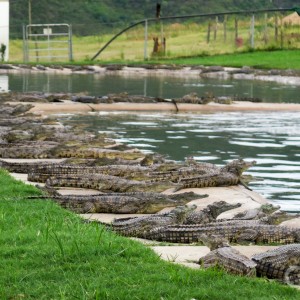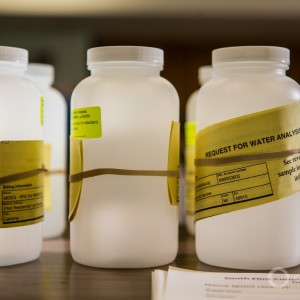The Stream, January 27: Drought in Southern Africa Cuts Zimbabwe Water Supply
The Global Rundown |
Water supplies in Zimbabwe’s dams may not last until the start of the October rainy season due to a a severe drought stretching across southern Africa. Droughts linked to El Nino have also exacerbated food shortages and humanitarian crises in the Asia-Pacific region, where UNICEF is appealing for millions of dollars to aid affected children. Architects around the world are looking for ways to rebuild communities after natural disasters using local materials and innovative designs. California will likely be able to release more water from state reservoirs this year than previously thought. Multinational companies are often unaware of their climate risks due to gaps in information provided by suppliers, a new study found. A separate study concluded that hydraulic fracturing would be unlikely to contaminate drinking water sources in Germany.
“These are the chilling effects of the climate phenomenon which has not only affected Zimbabwe, but the whole SADC [southern Africa] region. This address is a clarion call for all of us to be highly responsible and adopt measures that will ensure that we go through the drought period together.” –Oppah Muchinguri, Zimbabwe’s water minister, on a regional drought in southern Africa that has left major dams in Zimbabwe half full. The water supplies in the dams are not enough to last until the start of the October rainy season. (Bloomberg)
By The Numbers |
$62 million Amount of an appeal by the United Nations Children’s Fund to assist children in the Asia-Pacific region, due to droughts and food shortages linked to El Nino. Reuters
15 percent Amount of requested water deliveries that California state reservoirs will be able to fulfill this year, according to state projections. Last month, officials anticipated being able to fulfill just 10 percent of requested deliveries. San Francisco Chronicle
Science, Studies, And Reports |
Chemicals and fluids used in hydraulic fracturing operations for oil and gas would be unlikely to migrate into drinking water sources in Germany, a study by the country’s Federal Institute for Geosciences and Natural Resources found. The study estimated that Germany could recover 0.32 trillion to 2.03 trillion cubic meters of natural gas, and has between 13 and 164 million metric tons of shale oil. Reuters
Many multinational companies cannot gauge the extent of their climate risk because their suppliers do not report environmental performance, according to a study by consultancy groups CDP and BSR. Less than half of the suppliers for 75 major companies reported their carbon emissions and other environmental performance metrics when asked, the study found. CDP
On The Radar |
Homes constructed from readily-available local materials and designed to accommodate floods and other natural disasters should become the norm when rebuilding after a disaster, according to Pakistani architect Yasmeen Lari. Architects are looking to design cheaper, more accessible housing solutions when rebuilding disaster-hit communities. Reuters
A news correspondent for Circle of Blue based out of Hawaii. She writes The Stream, Circle of Blue’s daily digest of international water news trends. Her interests include food security, ecology and the Great Lakes.
Contact Codi Kozacek






Leave a Reply
Want to join the discussion?Feel free to contribute!